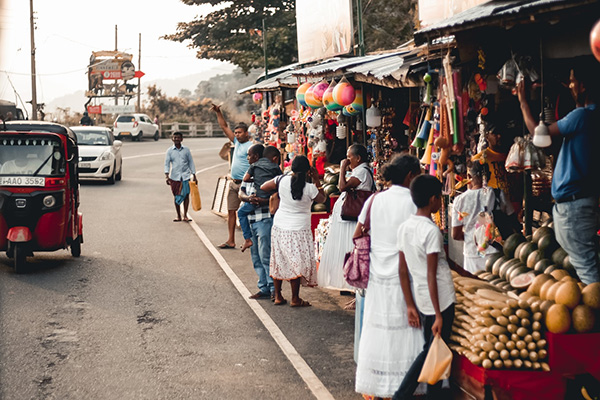
On the road to sustainable development, Sri Lanka provides an interesting case study. Having overcome a three-decade domestic conflict, Sri Lanka has begun its transformation towards a sustainable and resilient society. The extreme poverty rate ($1.90 a day) dropped to 0.8% in 2016. The unemployment rate is below 5% since 2010.
Free education and health policies have resulted in high youth literacy rates (98.7%) and high life expectancy (75 years). Measured by its index of human development, Sri Lanka is a high achiever.
However, Sri Lanka still faces major challenges. Improving the quality and relevance of education, providing medical treatment and care facilities for the aging population, and fighting climate disasters call for further policy support, financial mobilization and partnership strengthening.
From increasing investment to raising investment efficiency
Investments needed to achieve the SDGs are huge, but not beyond reach. Preliminary estimates by ESCAP suggest that Sri Lanka needs an annual additional investment of 4.4% of the 2018 GDP through 2030 to provide a social protection floor (1.7 %), poverty gap transfers (0.2 %), quality education (1.6%) and climate-resilient infrastructure (0.8%).
Some of these investment needs have been mainstreamed into the Sri Lankan Government’s budgets. For example, Budget 2019 focuses on:
> Quality education by reforming curricula to enable the combination of Science, Technology, Engineering, Math and the Arts (STEM + A), enhancing continuous professional training for teachers, and introducing more technology in education delivery.
> Healthcare services and facilities by enhancing investments in healthcare delivery, quality, and infrastructure; Agriculture by linking smallholder farmers to value chains of larger enterprises, investing in climate-proof warehousing, and enhancing natural disaster insurance for farmers.
> Climate resilience by improving irrigation infrastructure quality, strengthening eco-system conservation, and expanding natural disaster insurance scheme. Gender equality by sharing costs of maternity benefits, facilitating childcare services by businesses and schools, and encouraging the participation of women on corporate boards.
The 2030 Agenda provides a blueprint to achieve a more sustainable future for all. Sri Lanka’s efforts in mainstreaming the SDGs into its national planning and budgeting are an interesting case for the rest of the Asia-Pacific region to learn - a country does not need to wait until it achieves economic affluence before tackling social well-being and environmental health. Developing countries should incorporate social and environmental goals into their path towards prosperity.
Source: https://www.unescap.org/blog/sdg-implementation-and-budgeting-sri-lanka

















Leave a Reply